Archives: expositions
les expositions
Laura, Massimo, Sergio, Mario, Ludovico, 5 designers for VENINI
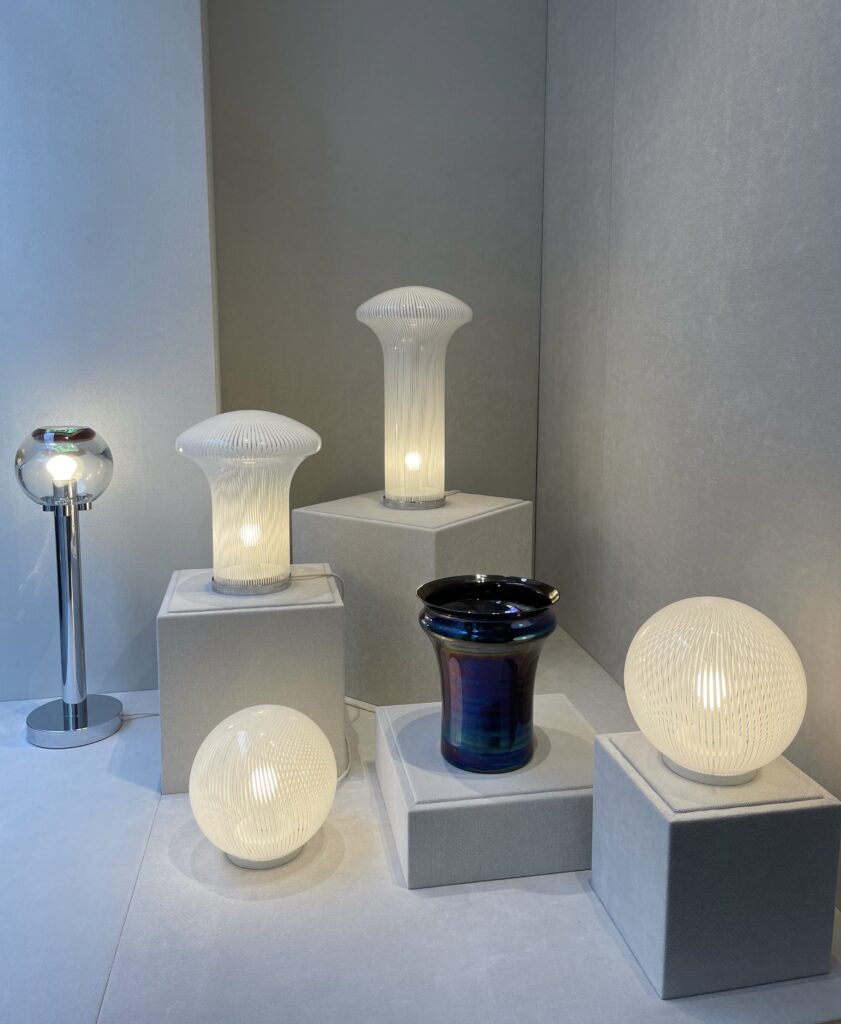
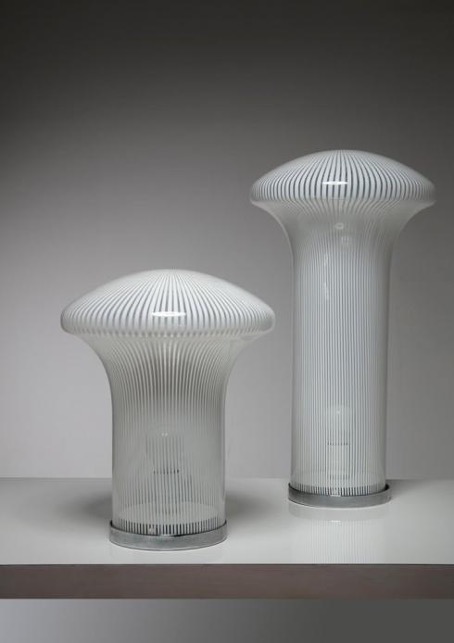
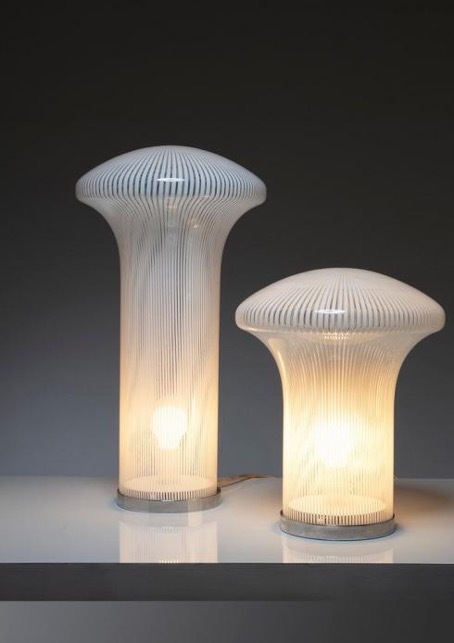
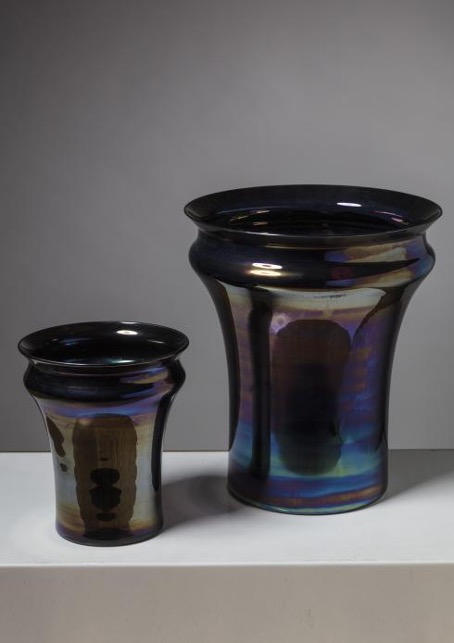


After the creations of Alfredo Barbini (1912-2007) and Ettore Sottsass (1917-2007), Abraham & Wolff is pleased to exhibit the works of the Venini for its third collaboration with Compasso gallery (Milan).
Paolo Venini (1895-1959) is considered one of the most important figures of 20th century glass art in Venice. He was born in Milan where he studied law. In 1921 he founded a glass company in Murano with Giacomo Cappellin (1887-1968). The two men separated four years later. Venini then joined forces with the sculptor and designer Napoleone Martinuzzi (1892-1977). Under the direction of Venini – himself a designer of glass objects – the company revolutionised modern artistic glassware with a stylistic approach that combined innovation, sensitivity to the demands of international markets and mastery of traditional Murano production techniques. From the 1920s onwards, the pieces produced by Venini’s furnaces were distinguished by the extremely detailed work of the master glassmakers, a rich chromatic palette and a design that was far ahead of its time. This combination of aesthetic sophistication and age-old know-how open to experimentation enabled Venini to achieve great critical and public success.
Over the decades, Venini pursued his stylistic research by working with some of the best designers, artists and architects of his time, including Gio Ponti (1891-1979), Carlo Scarpa (1906-1978), Fulvio Bianconi (1915-1996), Tyra Lundgren (1897-1979), Tapio Wirkkala (1915-1985) and Timo Sarpaneva (1926-2006). After Venini’s death in 1959, the company remained faithful to the spirit of its founder, developing fruitful collaborations with new designers such as Ettore Sottsass (1917-2017) and Alessandro Mendini (1931-2019), but also with a new generation of international designers and architects such as Tadao Ando (born 1941), Peter Marino (born 1949) and Ron Arad (born 1951).
Today, Venini’s creations are part of the permanent collections of the Metropolitan Museum (New York), the Cooper Hewitt, Smithsonian Design Museum (New York), the Museum of Modern Art (New York), the Fondation Cartier (Paris) and the Victoria and Albert Museum (London).
Abraham & Wolff is exhibiting a selection of lamps and a vase resulting from Venini’s collaboration with the designers Sergio Asti (1926-2021), Ludovico and Laura Diaz de Santillana (1931-1989 and 1955-2019), Mario Ticcò and Massimo Vignelli (1931-2014).
Miriam Cahn
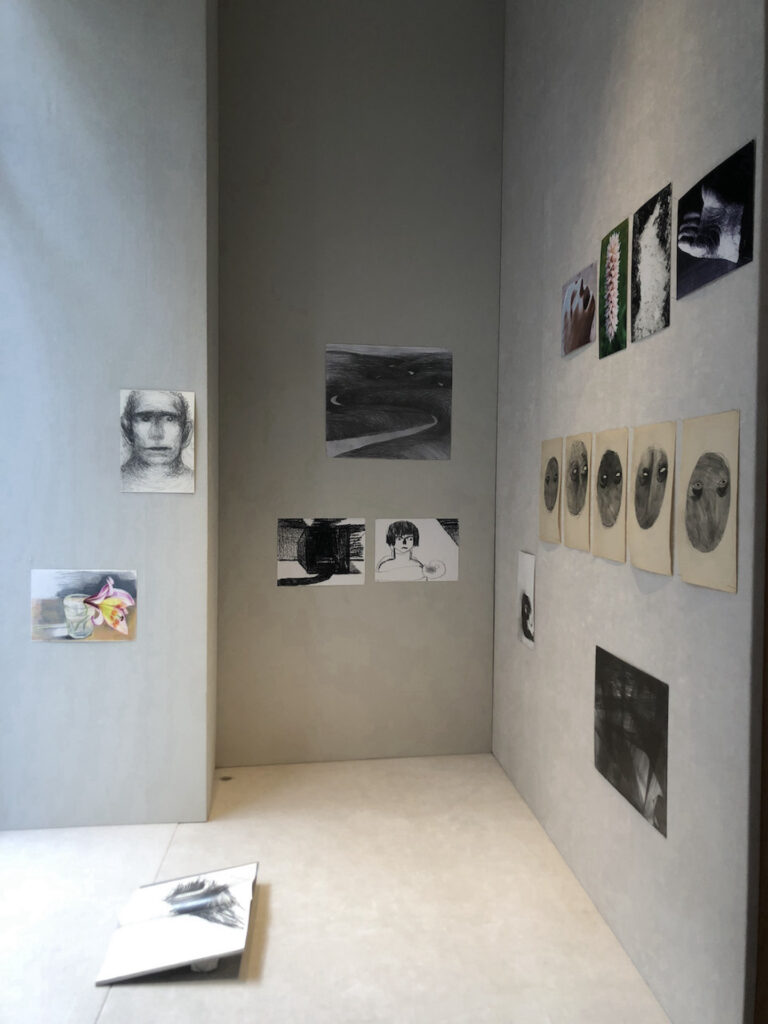
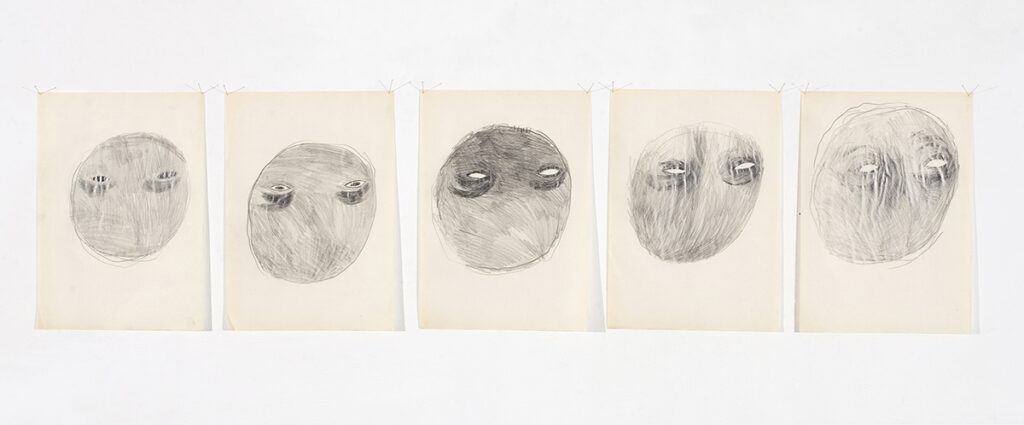
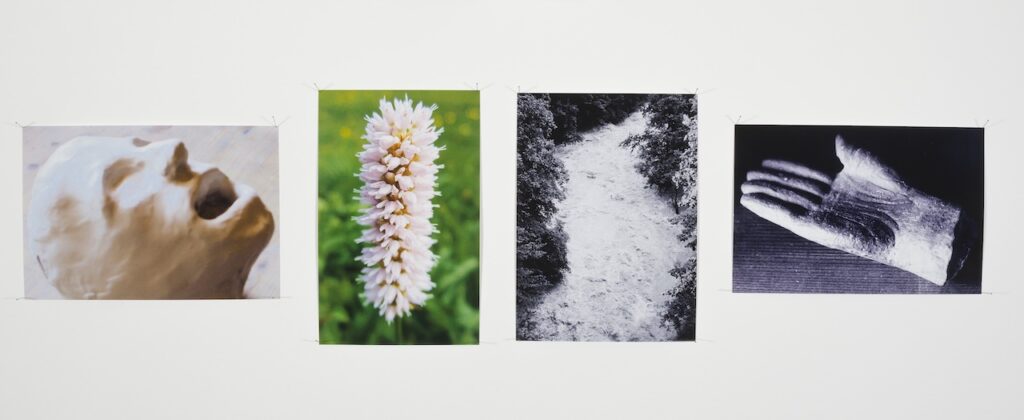
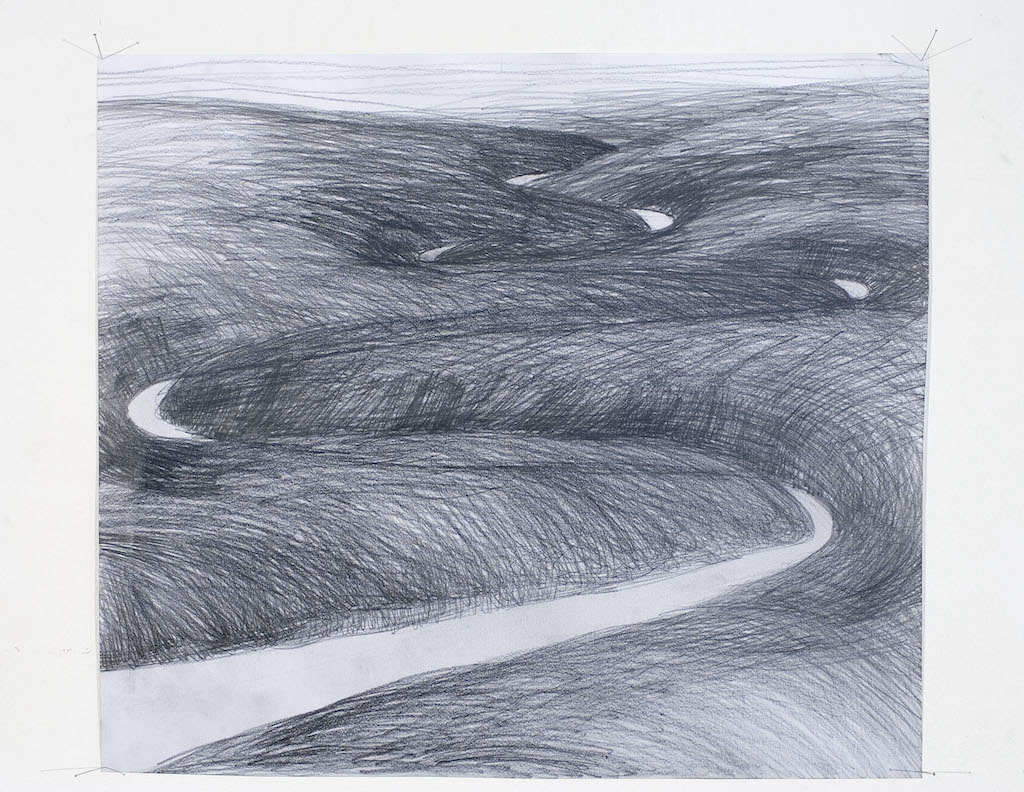
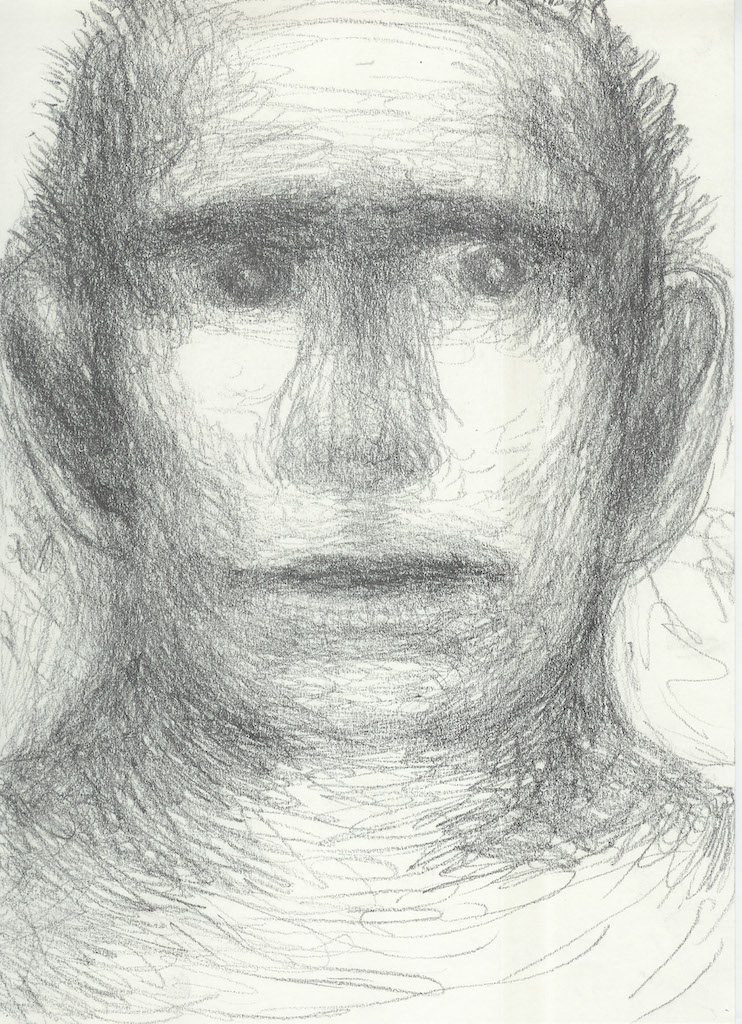
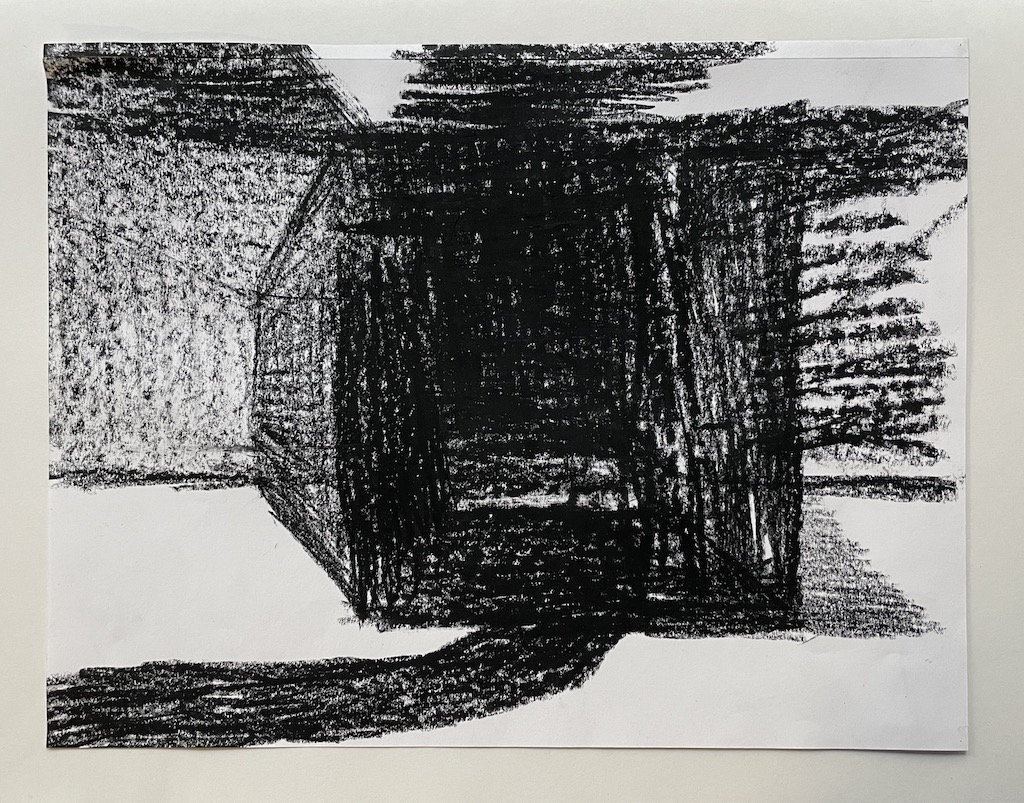

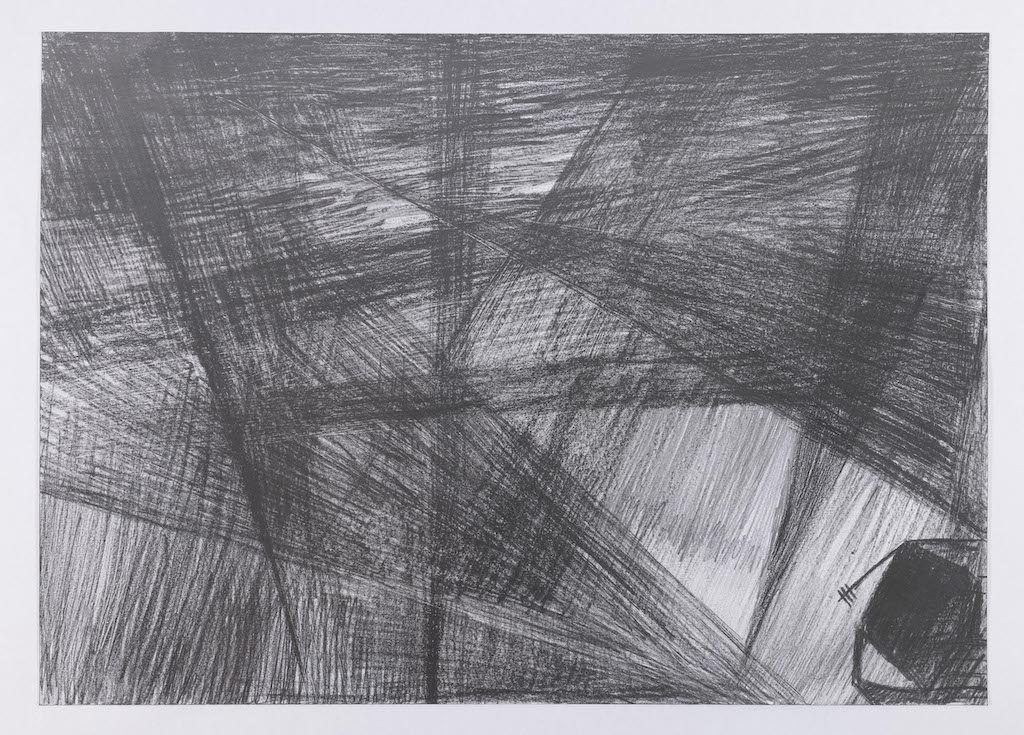
To echo the exhibition entitled Ma pensée sérielle (My Serial Thought), which is dedicated to her from 17/02/2023 to 14/05/2023 at the Palais de Tokyo, Abraham & Wolff is honouring the work of the Swiss artist Miriam Cahn by exhibiting a selection of previously unseen works as well as one of her drawing books dating from 1978.
Whether it is a flower in a glass of water, a figure with a stunned look, a bombing scene, a road winding through the hills, a series of ghostly faces or scans of the artist’s photographic and sculptural work, this ensemble reveals the multiple facets of a work haunted by socio-political violence, media images and feminist issues.
Jean-Marie Perdrix
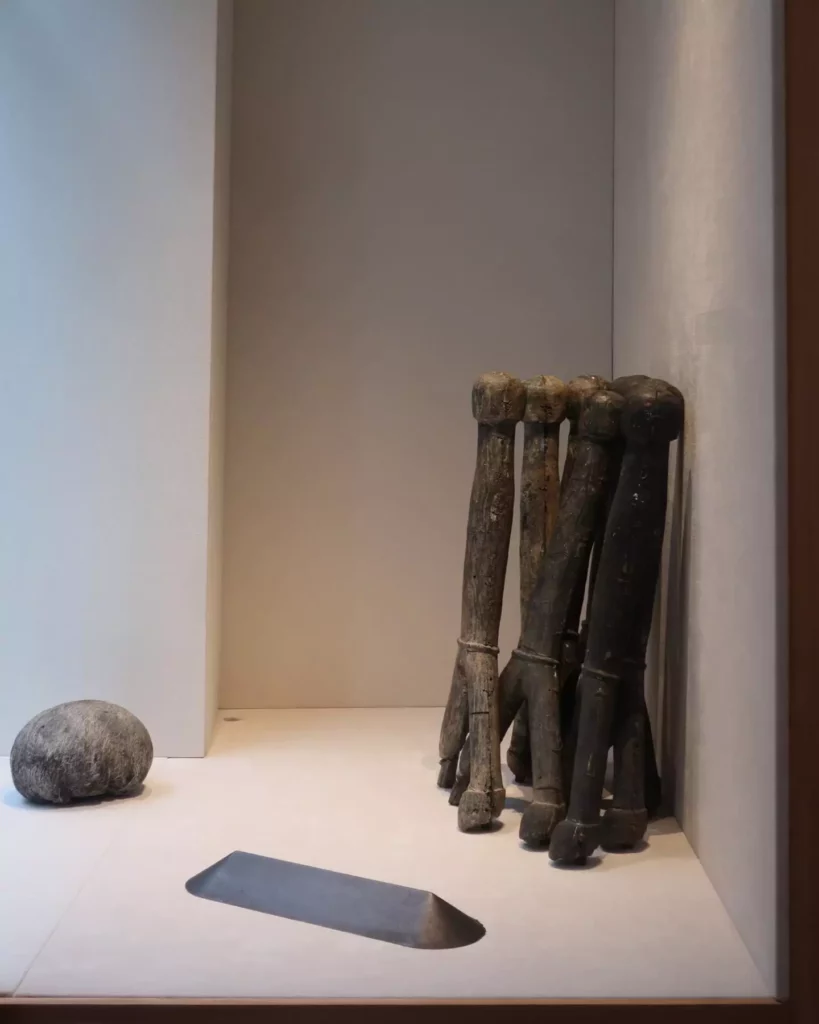
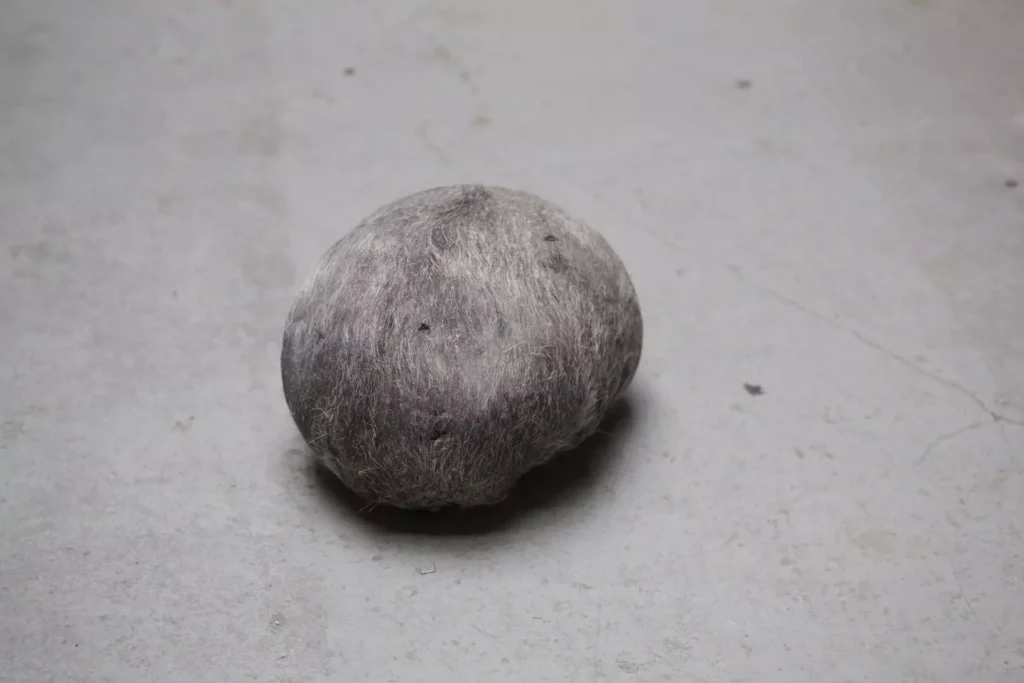
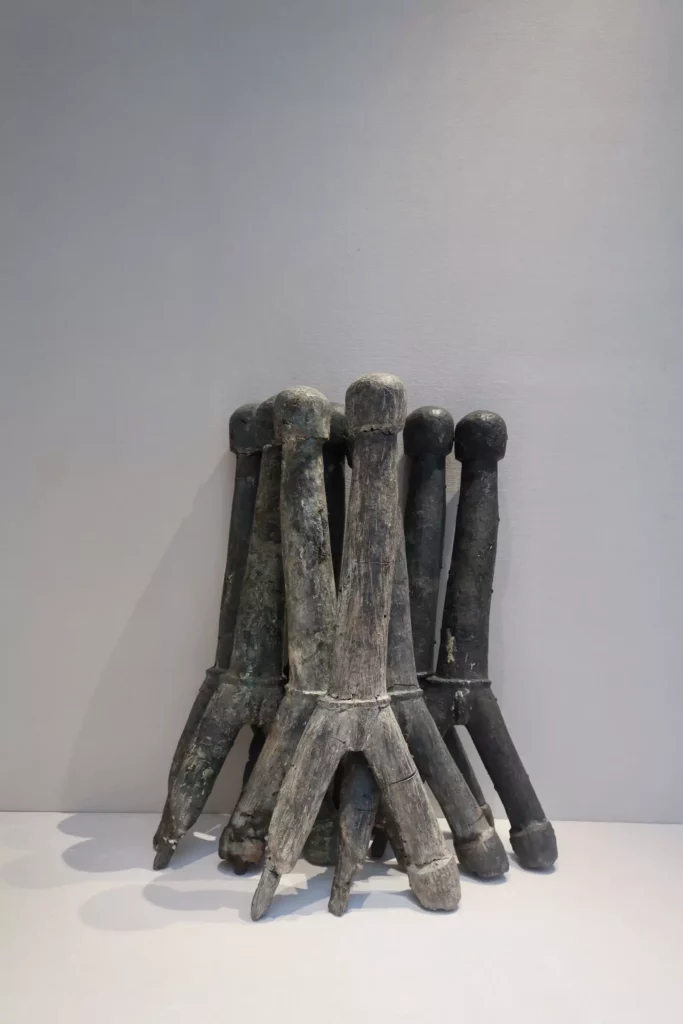
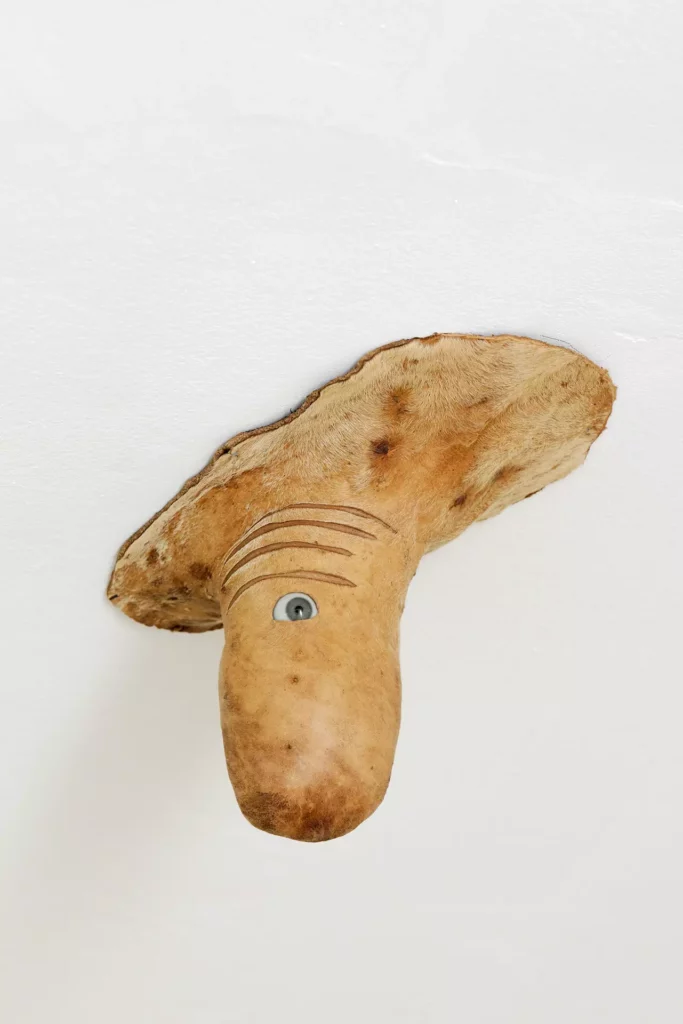
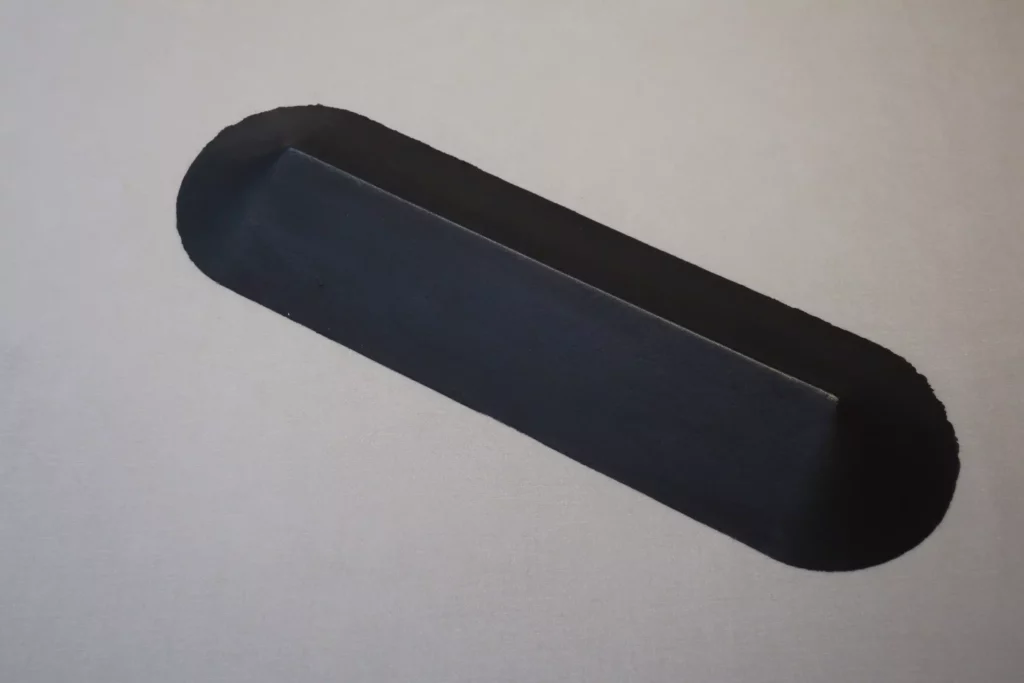
French visual artist Jean-Marie Perdrix (born 1966) has developed his work far from the institutional and commercial framework. His sculptures are the fruit of a slow contextual process made of an encounter with a place and its human, social and economic specificities. Working with cast iron, plastic and bronze, the artist has conducted extensive research on the various casting techniques that have led him to workshops and factories in Georgia, Serbia, Mexico, and especially Burkina Faso. In this country, in Koudougou, the artist befriended master bronze casters with whom he made an impressive series of casts with lost flesh. Bust of dogs, heads of donkeys and horses where the cast metal comes to mingle with the bones and coal, leaving in evidence the stigmata of the violent transformations through which the material has passed.
Sensitive to the issue of pollution in Africa, Perdrix and his Burkinabé collaborators have also developed a technique to recycle and melt plastic bag waste. Using this material, the artist created the Yabas series (2002-2023), black plastic casts of an authentic totem pole, before setting up – still in collaboration with his local partners – a permanent activity of recycling this harmful waste into school furniture. The objects resulting from this production are thus emblematic of a practice that links artistic, social and political issues without didacticism.
Jean-Marie Perdrix’s work has been exhibited at the IAC in 2018 on the occasion of the Otium#3 project, at the Marian Goodman Galery (New York) in 2017, at the Biennale d’art contemporain de Rennes in 2016, and at the Fondazione Giuliani (Rome) in 2013, on the occasion of the exhibition The Promise of Melancholy and Ecology, curated by Chris Sharp.
For this new exhibition, Abraham & Wolff is pleased to exhibit a selection of works that includes a cast iron sculpture belonging to the Elusive Forms series (1987 – 2017), a work belonging to a series titled Your Pair (2017), a sculpture belonging to a set of pieces elaborated from recycled plastic cast in upturned animal skins, and a set of eight Yabas.
Francisco Tropa and Oswald Oberhuber
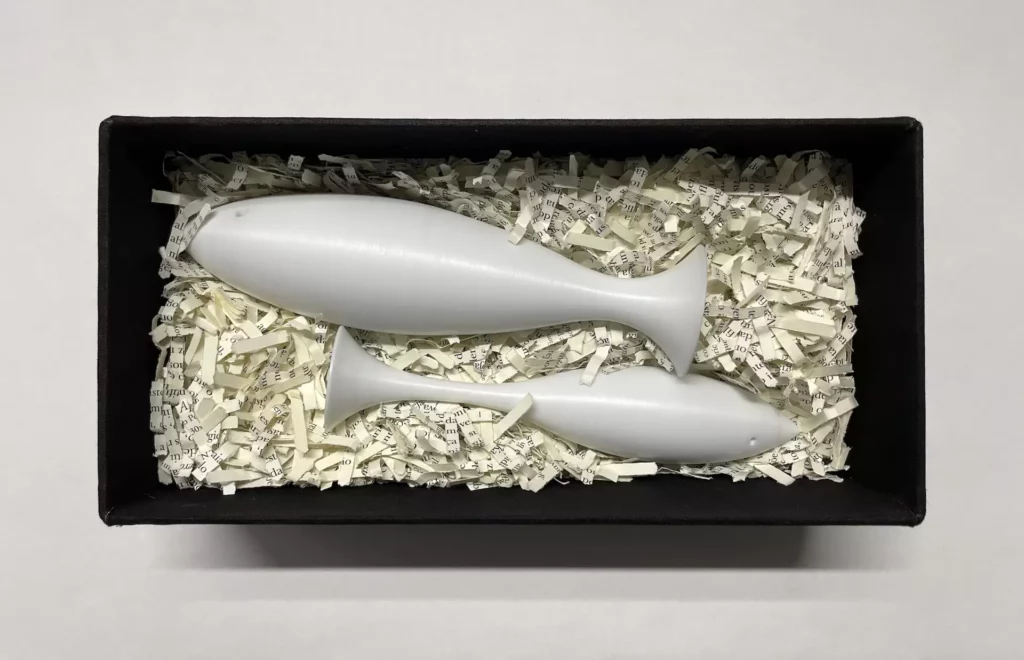
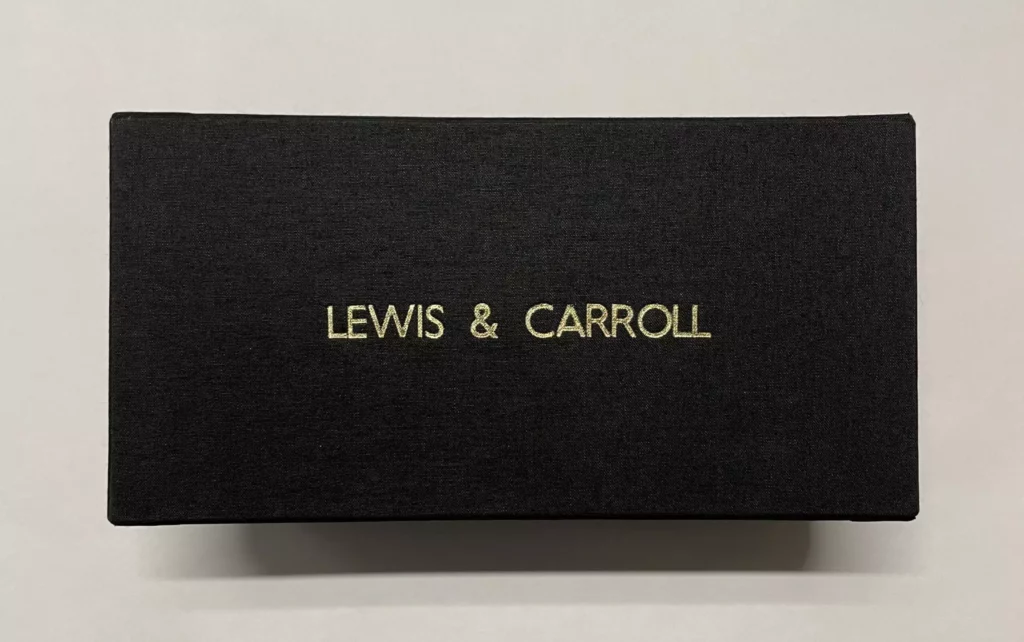
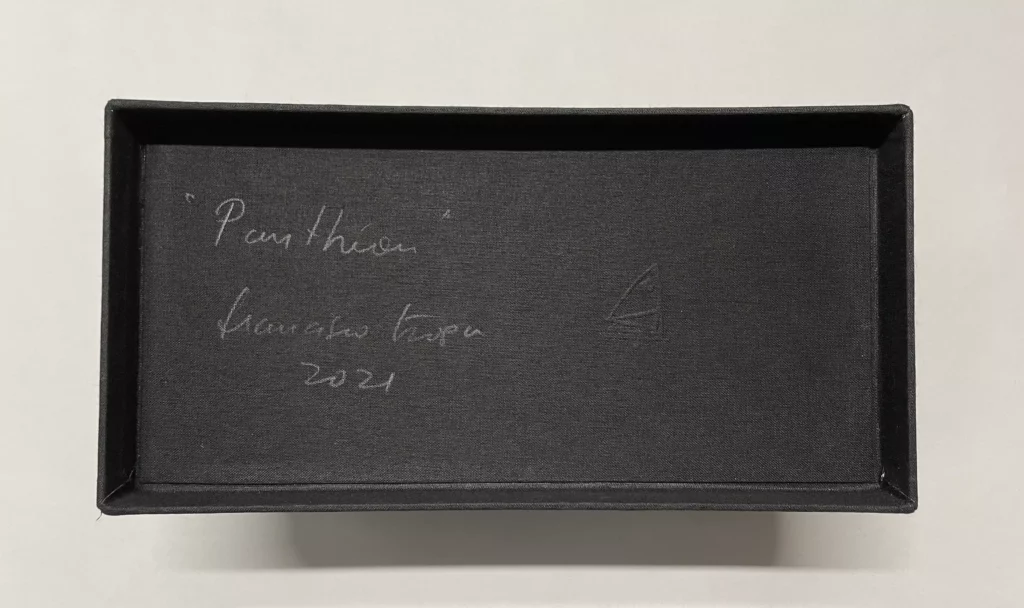
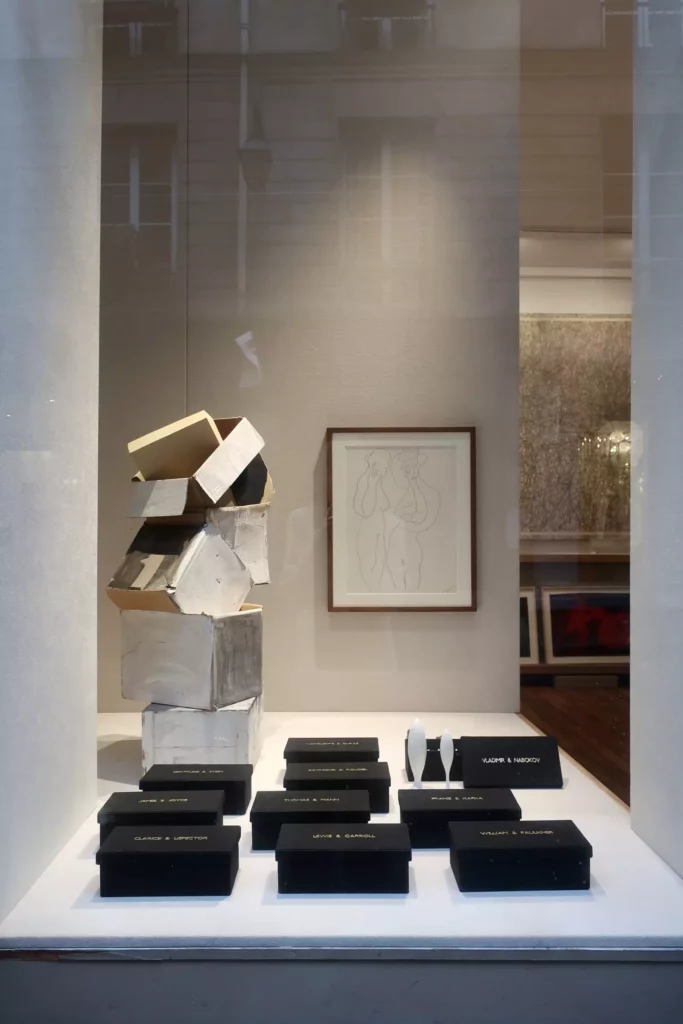
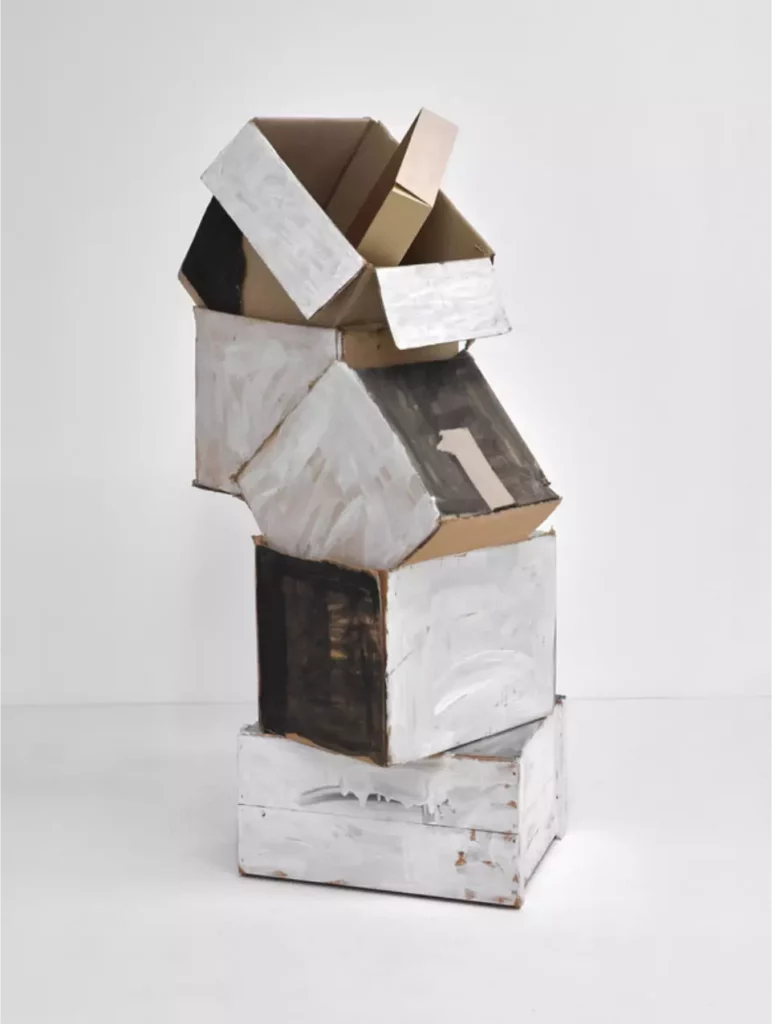
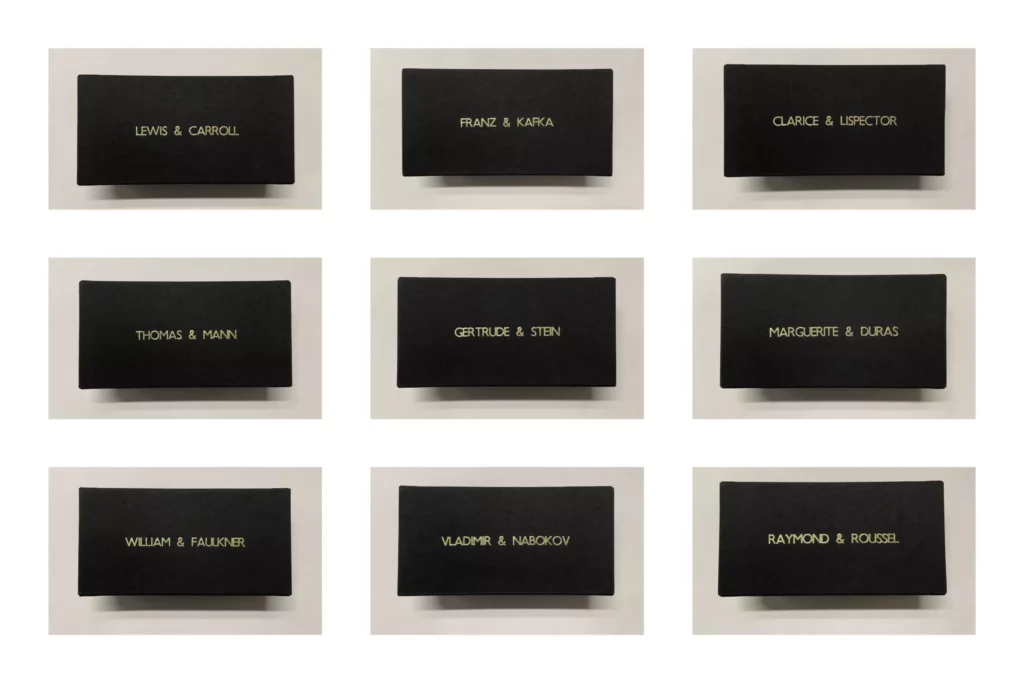
Francisco Tropa (born in 1968) is the creator of a universe of his own, unfolding through complex installations that evoke themes such as the body in movement, time, death, play and archaeology. These installations are made up of mysterious objects that the artist elaborates at the crossroads of multiple artistic, historical, literary or philosophical references, which feed an original reflection turned towards the problems that cross the history of sculpture from Antiquity to our days. Combining conceptual thinking and traditional know-how, Francisco Tropa’s creations use a wide range of media and techniques, from watchmaking to casting, from blown glass to video, and including painting and various printing and engraving processes.
For this exhibition, Abraham & Wolff proposes, alongside a sculpture by Oswald Oberhuber, these objects consisting of a black box containing two sculptures resting on a bed of cut paper. They belong to a series entitled Pantheon which was inspired to Tropa by Flaubert’s famous Bouvard and Pécuchet. From the title of the novel, the artist imagined a humorous game on the names of the writers he likes. James & Joyce, Gertrude & Stein, Raymond & Roussel, Lewis & Carroll, William & Falkner, Clarice & Lispector, each author of this literary pantheon sees his patronymic changed into a couple of characters embodied by two modernist sculptures of sardines realized by turning in an ultra-resistant resin. Like other works by Tropa, these sardines can be manipulated in various ways. They can be left lying on their bed of paper cut out of the pages of a book, extracted together or separately to be displayed standing up, etc. The user is free to take possession of them.
Oswald Oberhuber
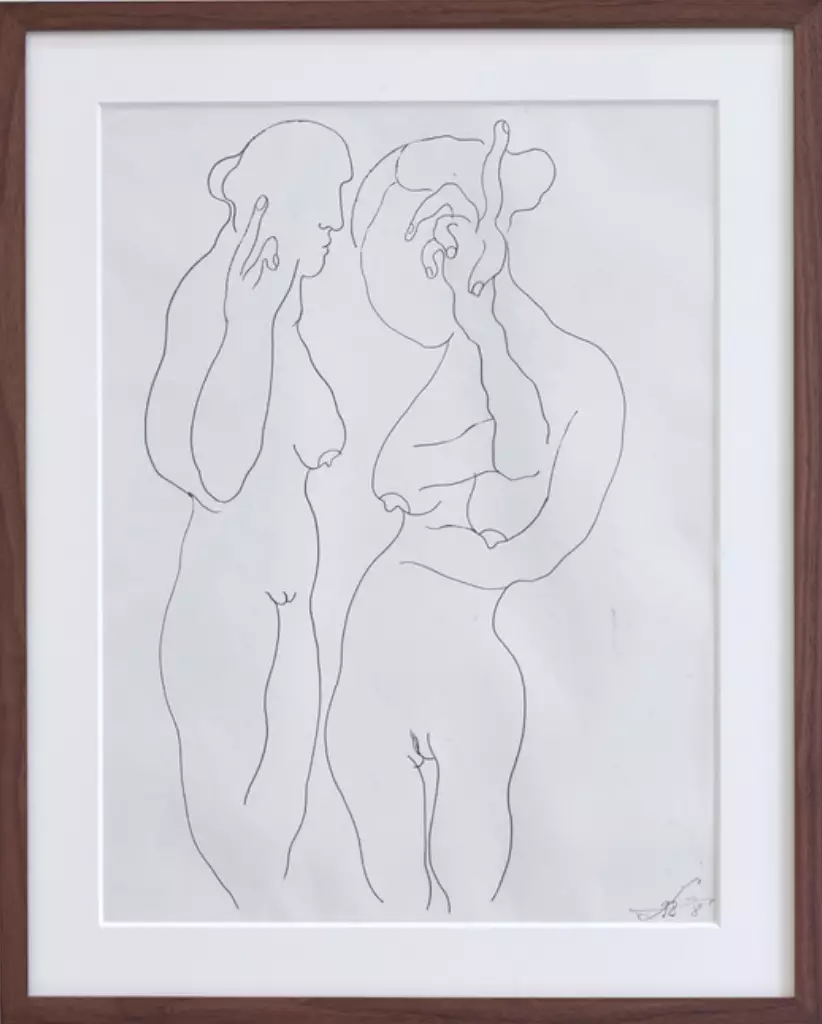
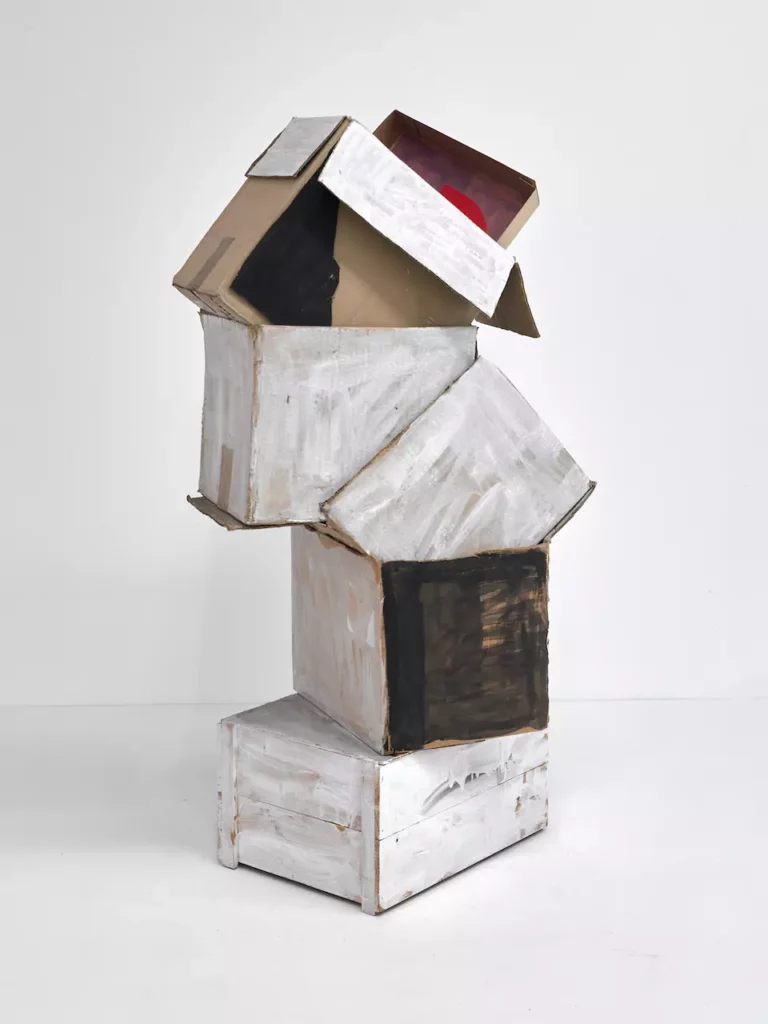
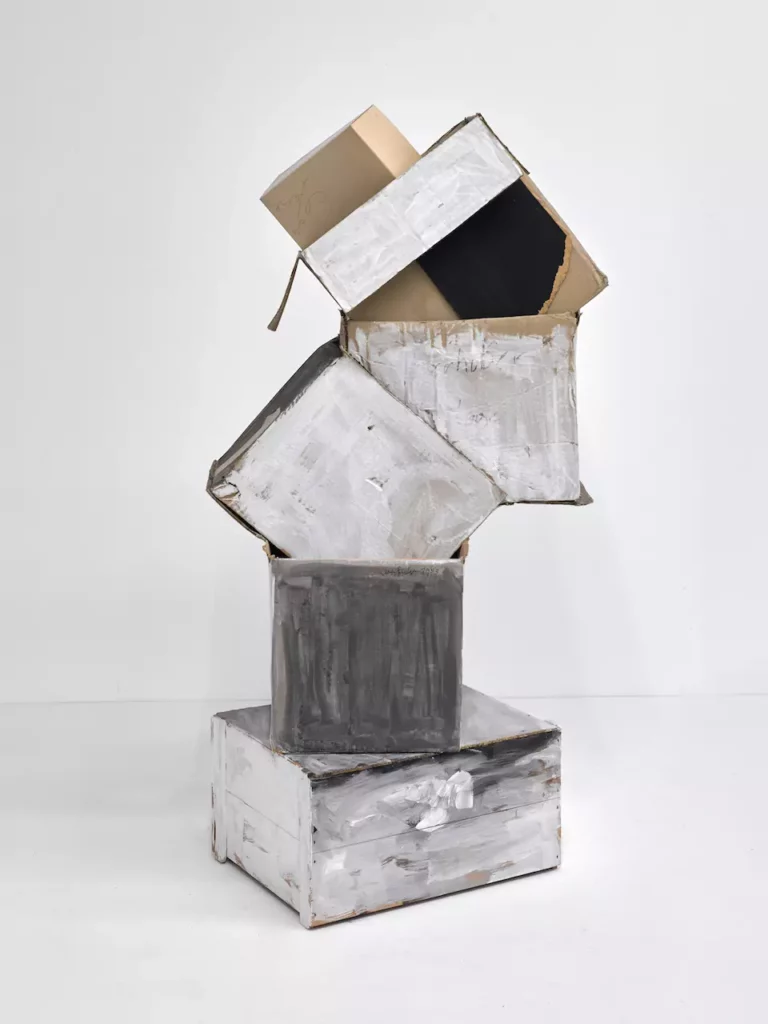
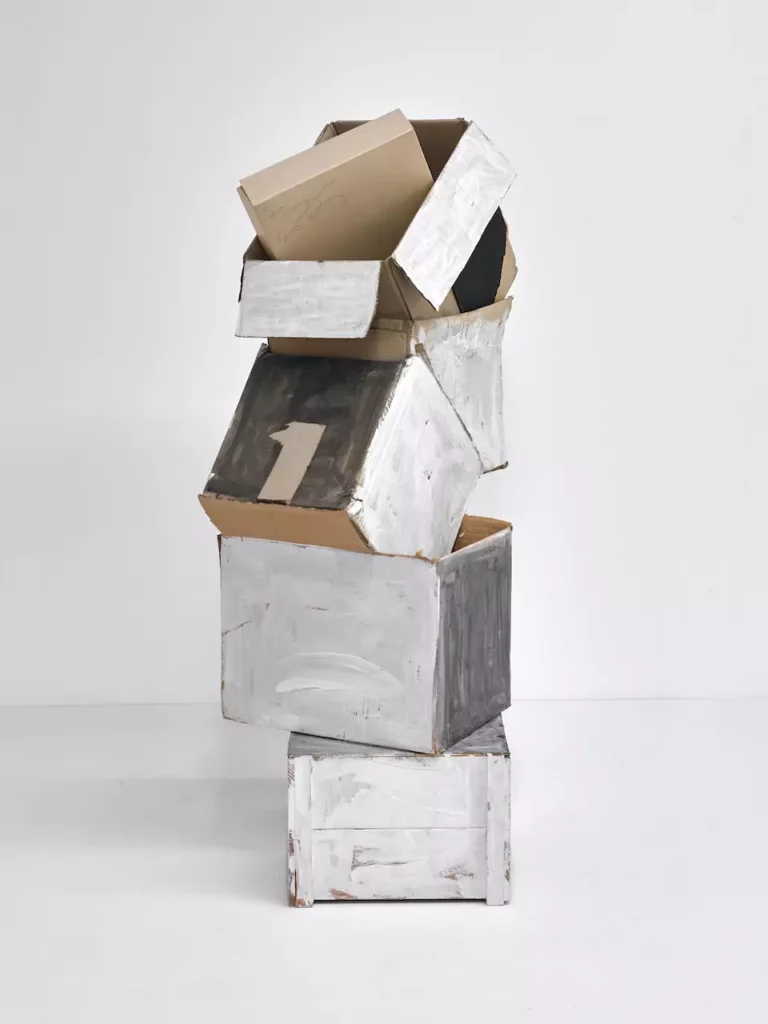

Austrian artist Oswald Oberhuber (1931-2020) found his first inspiration in the post-war movement of informal art. He created sculptures in plaster and bronze that interpreted in three dimensions this new painting that advocated the expressiveness of the material and the spontaneity of the gesture. Borrowing from Leon Trotsky the concept of “permanent revolution”, the artist declared in 1956 that the absence of form is the general maxim of his artistic practice, as well as an attitude towards life. He makes then of the “permanent change” the watchword of his negation of the aesthetic and social norms. In this way, his rebellious work opens up to recurrent transformations throughout his career, seizing all mediums and moving from one style to another: conceptualism, realism, Pop-influenced paintings, assemblage and collage, political posters. As a gallery owner and exhibition organizer, Oberhuber has led more than 600 projects, some of which have been important innovations in Austrian contemporary art. As a long-time professor and rector of the University of Applied Arts in Vienna, he also influenced the cultural and educational policies of his country, shaping the artistic conduct of several generations.
Oswald Oberhuber represented Austria at the Venice Biennale in 1972 and participated in Documenta 6 (1977), Documenta 7 (1982) and the São Paulo Biennale (1983).
For this new exhibition, Abraham&Wolff is showing a cardboard sculpture and a nude drawing in collaboration with the KOW gallery (Berlin), which bear witness to this free and anarchistic approach.
Isa Melsheimer and Alfredo Barbini
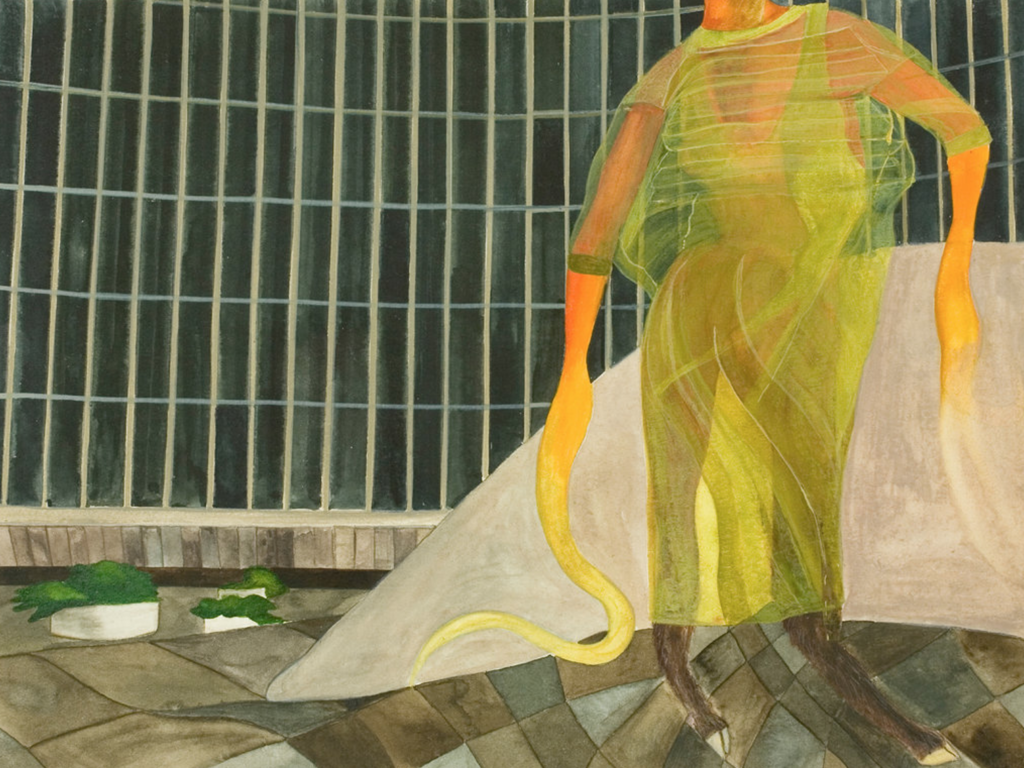
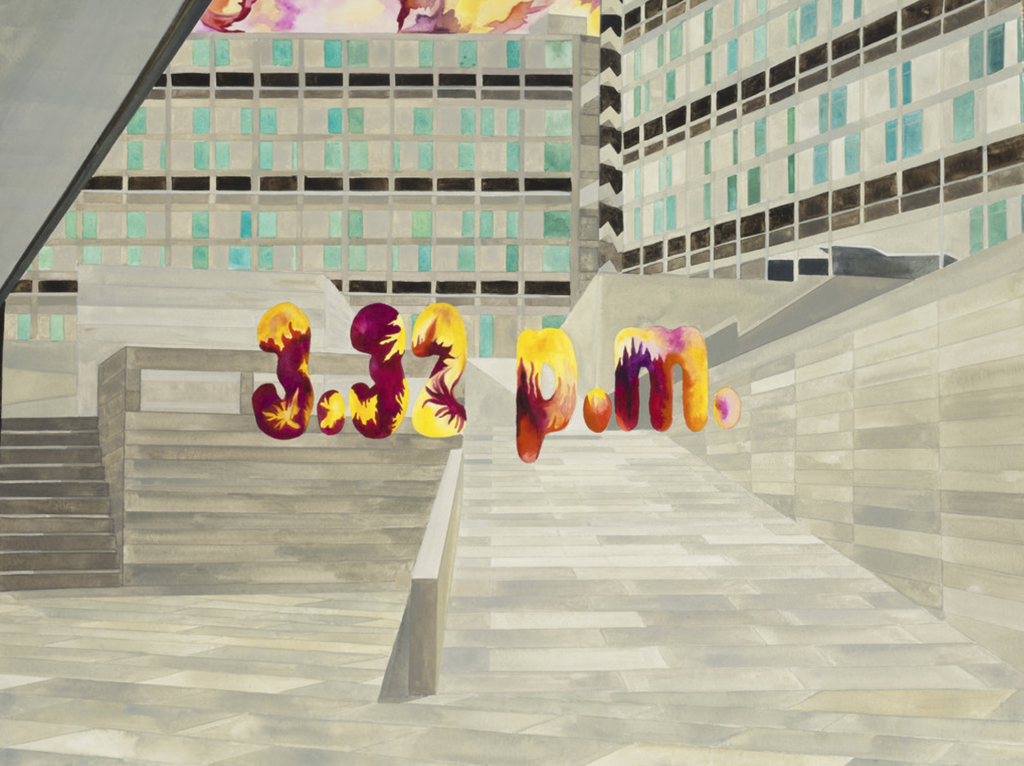
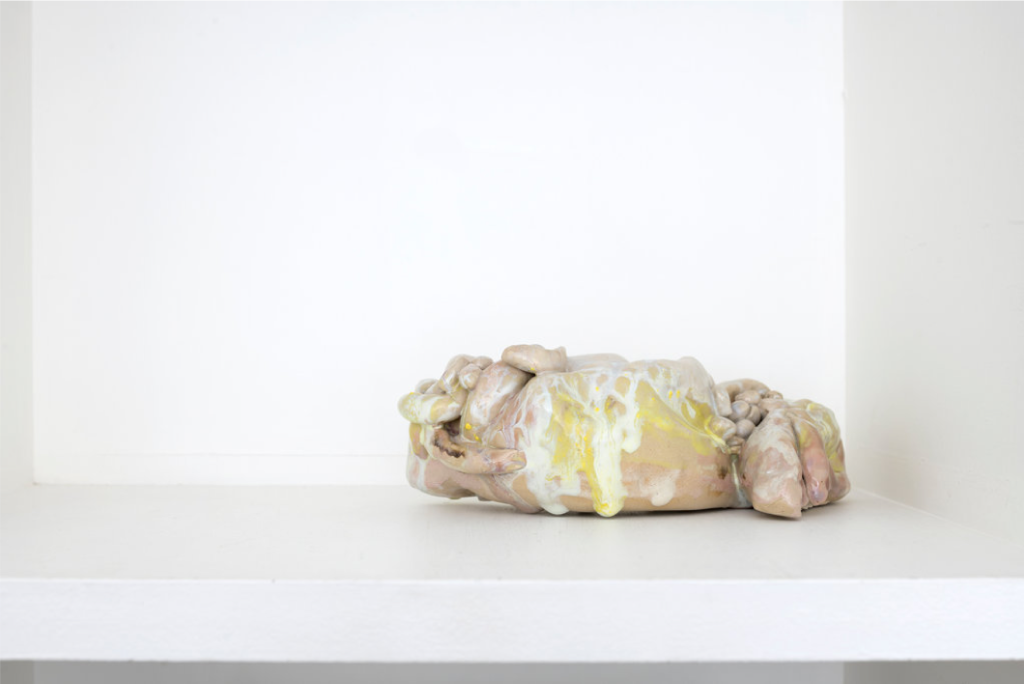
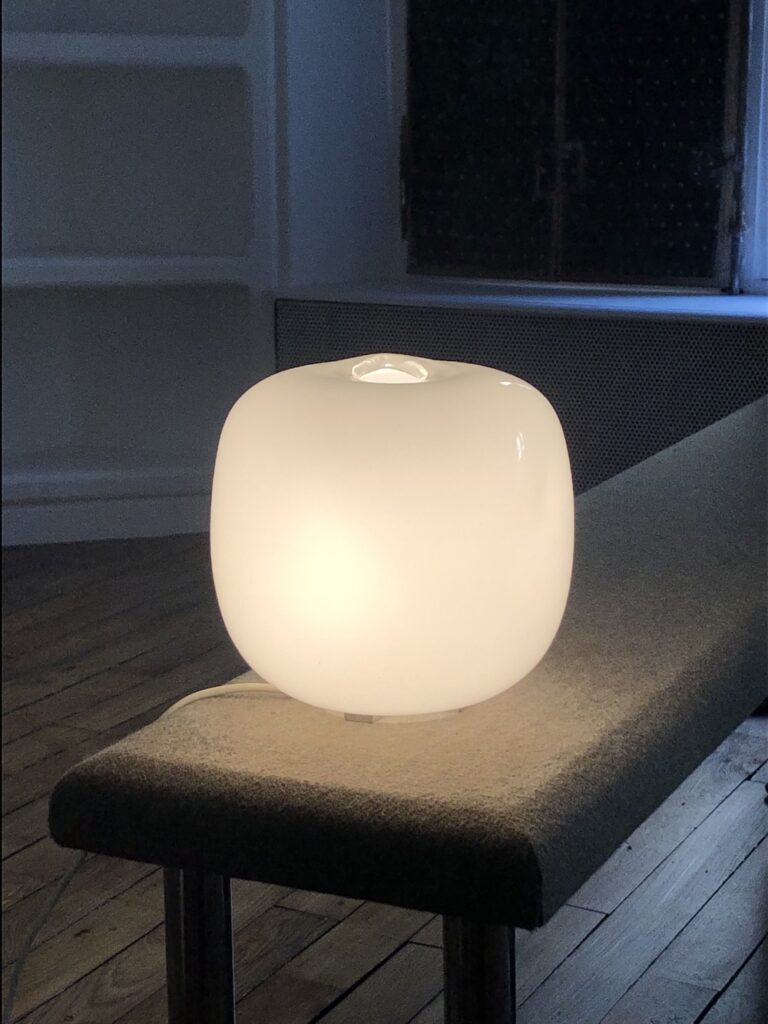
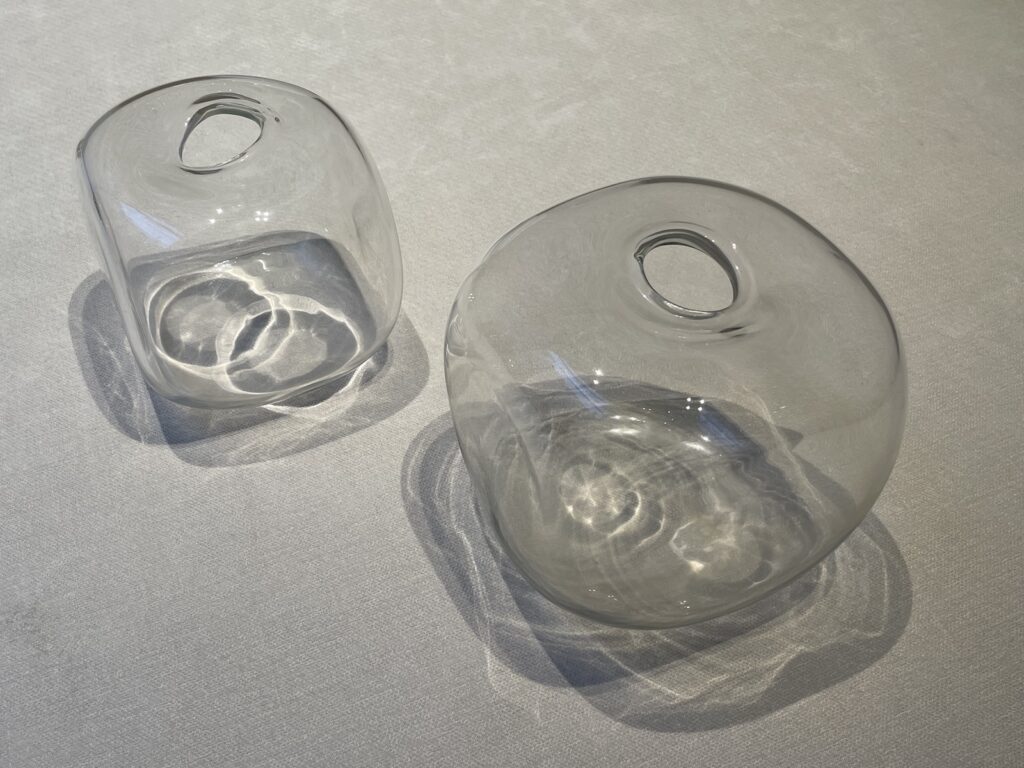
Berlin-based artist Isa Melsheimer (b. 1968) has been developing a complex body of work for several years that questions the interactions between humanity and the plant and animal world, exploring the architectural and environmental expressions of these interactions.
Drawing from the history of architecture and urbanism, references ranging from Le Corbusier’s urban utopia to the reflections of the metabolic movement and abandoned buildings, she creates sculptures that mix concrete, ceramics and glass to form miniature architectures in which the inert matter of building materials is invaded, parasitized and phagocytized by primary forms of life or plants that seem to reclaim their right to these buildings. In the manner of science fiction stories that also inspire the artist, these sculptures offer us a disturbing vision of the future where the question of our sustainability, our survival in the age of capitalism and the end of utopias is raised.
In parallel to this sculptural work, Isa Melsheimer elaborates works based on textiles, botanical worlds blossoming in glass boxes, but also gouache drawings that continue this reflection on the metabolic interaction between nature and humanity.
The showcase of the gallery hosts a selection of drawings representing deserted modernist buildings, around which wild animals sometimes roam. These representations invite us to reflect, without didacticism, on our relationship to inhabitable space, the place we occupy in it and that which we leave to the rest of the living world. They stand next to the swaddled ceramics from theBacteria series, small objects in the form of bubonic masses that evoke organisms infected by a virus.
These works are exhibited alongside a set of cubic vases by the master glass artist Alfredo Barbini (1912-2007), an outstanding technician and inspired designer, a leading figure in post-war Murano, twice awarded at the Venice Biennale for his glass sculptures, as well as a lamp imagined by the Italian designer Paolo Tilche (1925-2003) based on this emblematic cubic vase. These design pieces are offered in collaboration with the Compasso Gallery in Milan.
Laura Lamiel and Franz Erhard Walther

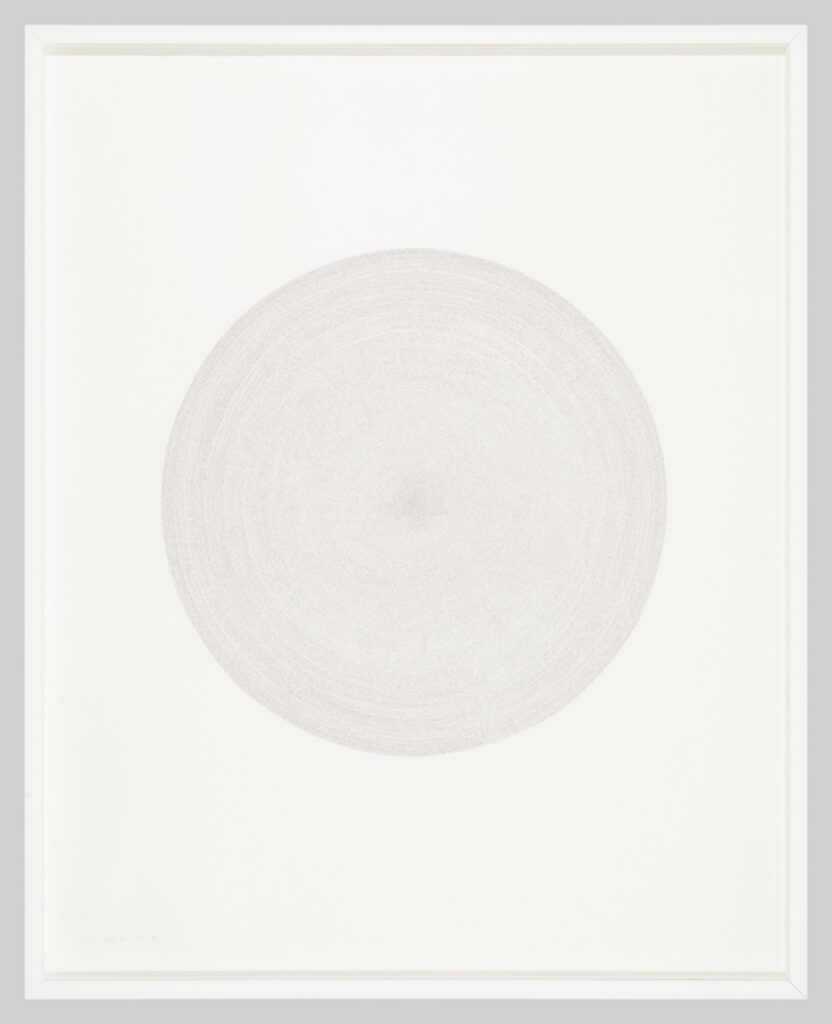
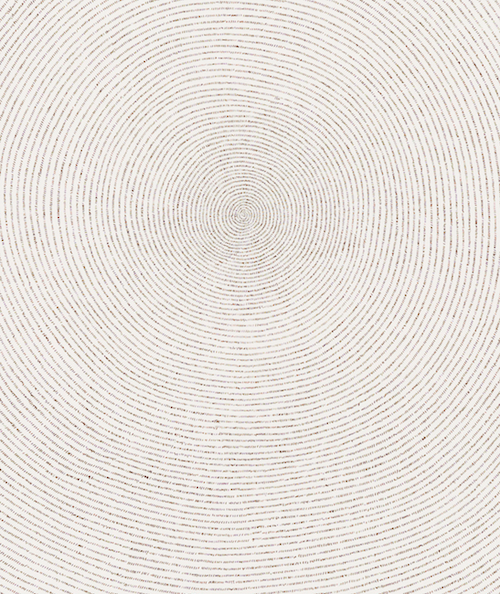
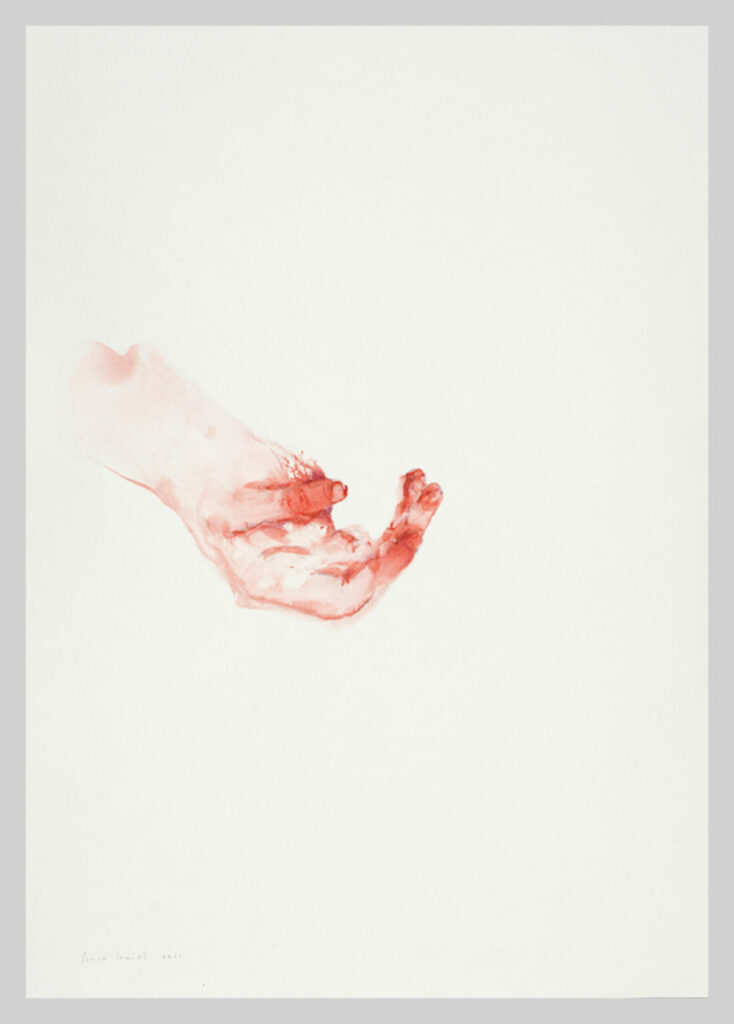
Laura Lamiel (born 1948) is a major French artist who has built up a unique artistic identity over the decades, nourished by psychoanalysis and a certain spiritual cosmology. After devoting the first years of her plastic reflection to painting, she has developed since the 1990s installations that take the form of delimited spaces – cells – inside which the artist arranges furniture, found objects, documents and personal accessories. She thus creates intimate and enigmatic universes at the threshold of which the spectator is invited to stand. Laura Lamiel has never stopped exploring the possibilities of this device. To the spaces made of white enamel and immaculate metal surfaces have been added work tables, open cells in the floor, one-way mirrors, and increasingly complex plays of light, while the biographical and affective charge of the materials used in the composition of these installations has been amplified.
The Abraham&Wolff gallery proposes to explore another facet of this demanding work by exhibiting a series of drawings by the artist in collaboration with the Marcelle Alix gallery. Laura Lamiel describes these drawings as a spontaneous expression that originates in the fundamental elements of her work. Far from constituting a parallel practice, they are an integral part of certain installations where they are placed in tension with other objects. She elaborates an impulsive vocabulary made up of tongues, rhizomes, lungs, eyes or heads that express a certain relationship to violence and to oneself.
This work, representing a hand, made with red Indian ink, from the series Intimate Territories, is a good example. It will be exhibited alongside a more conceptual drawing entitled 3 years, 3 months, 3 days, which is based on the hypothesis of a universe constructed by meditative sounds. Two approaches representative of a work that is both sensitive and mental.
These drawings will be displayed alongside Element n°7 of 1. Werksatz entitled Feld und Teilung (Field and Division), by the German artist Franz Erhard Walther (born 1939).
Franz Erhard Walther
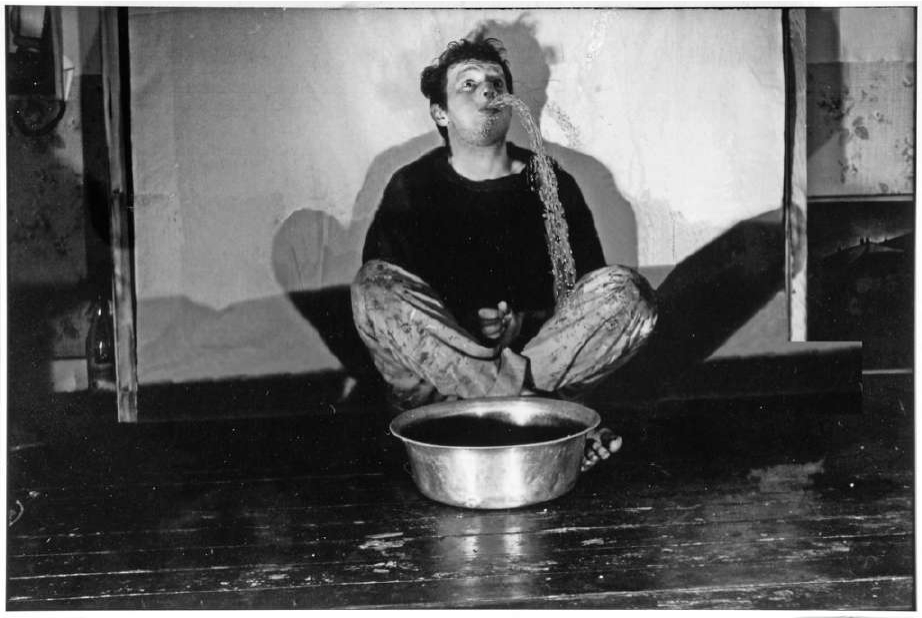
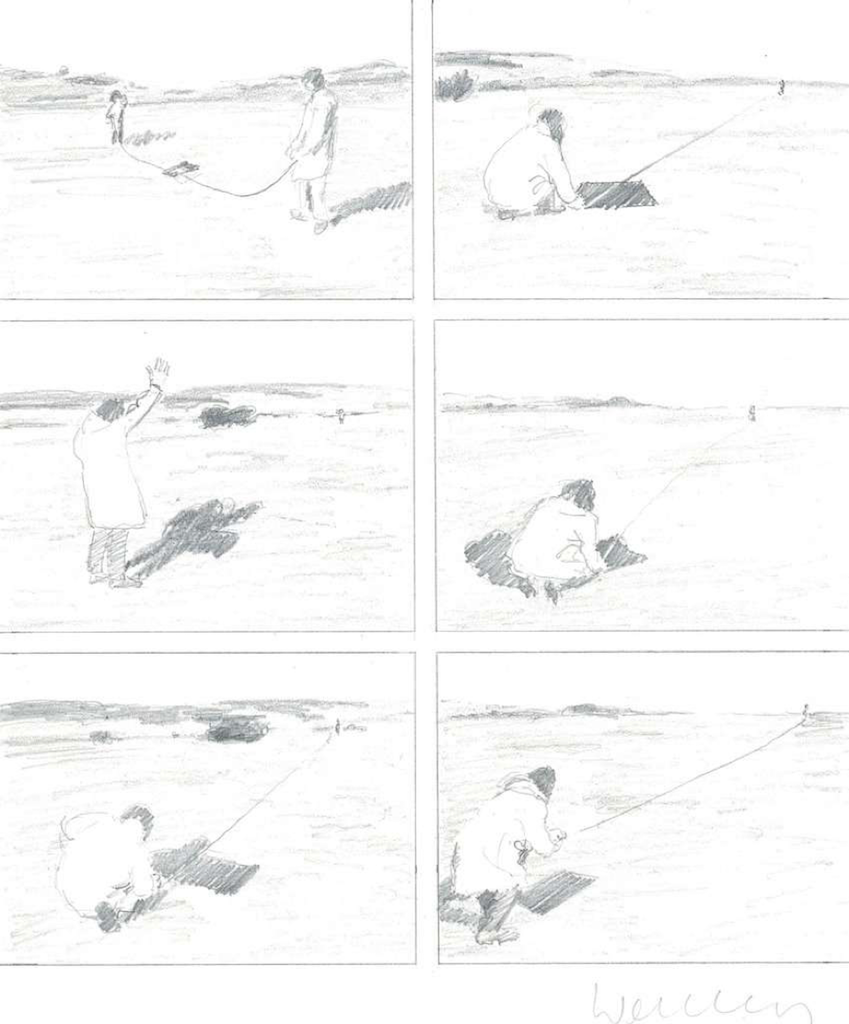
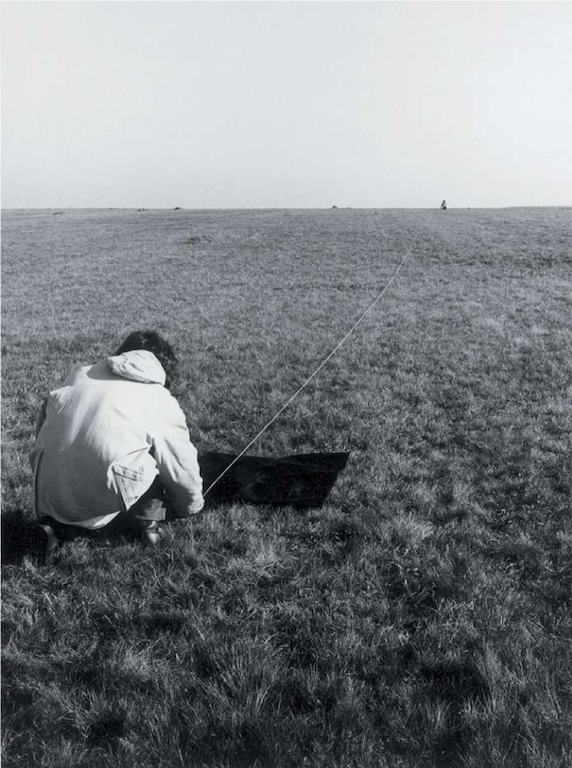
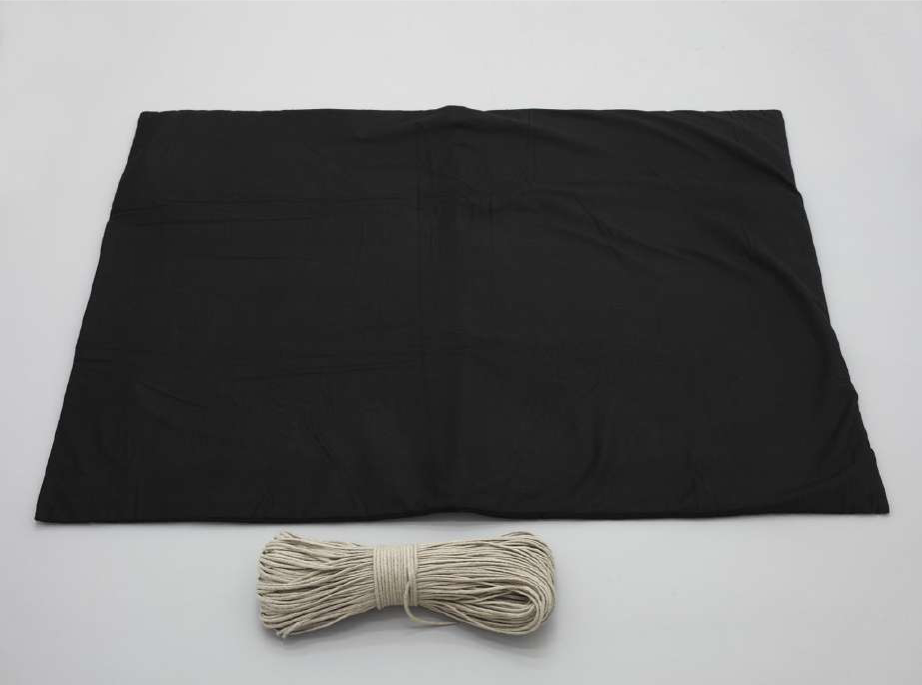
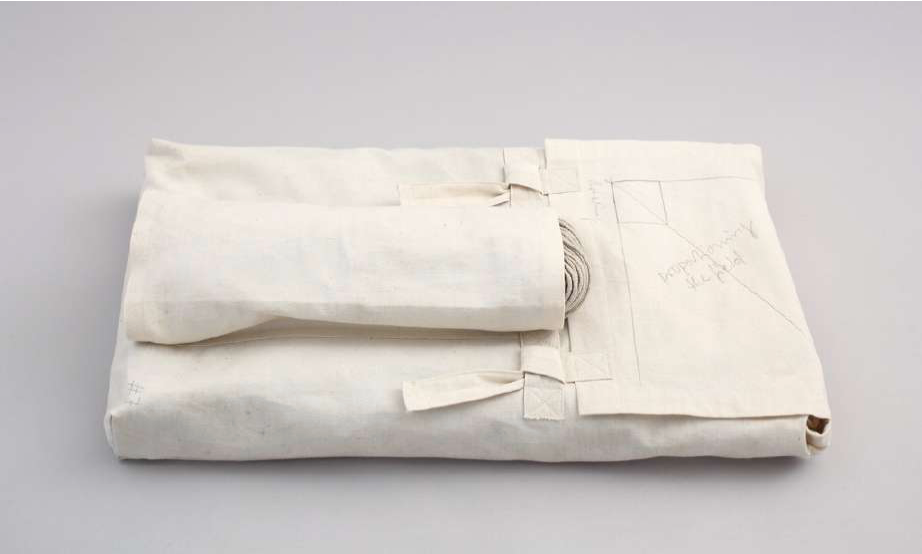
For its first exhibition, Abraham & Wolff will be showcasing the work of the German artist Franz Erhard Walther (born 1939). Walther, who has created a fundamental body of work at the crossroads of minimalism and conceptualism, revolutionised the traditional approach to sculpture by introducing a participatory dimension into his practice. His major work, 1. Werksatz, which he developed between 1963 and 1969, consists of 58 objects designed to be manipulated by spectators-turned-users.
From amongst this exceptional ensemble, Abraham & Wolff will be presenting Element 7, Feld und Teilung (Field and Division), a work designed to be activated outdoors. In a pioneering presentation, this object will be displayed at the same time as an “operating drawing” which explains its activation protocol in the form of a detailed storyboard. These two works will be exhibited alongside a photograph of the artist discussing his first reflections on the work of art as action.
